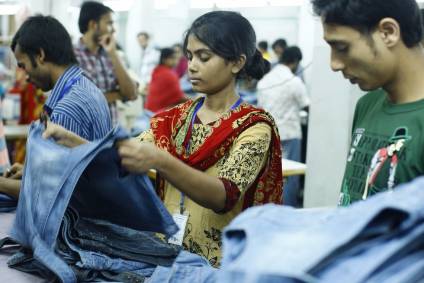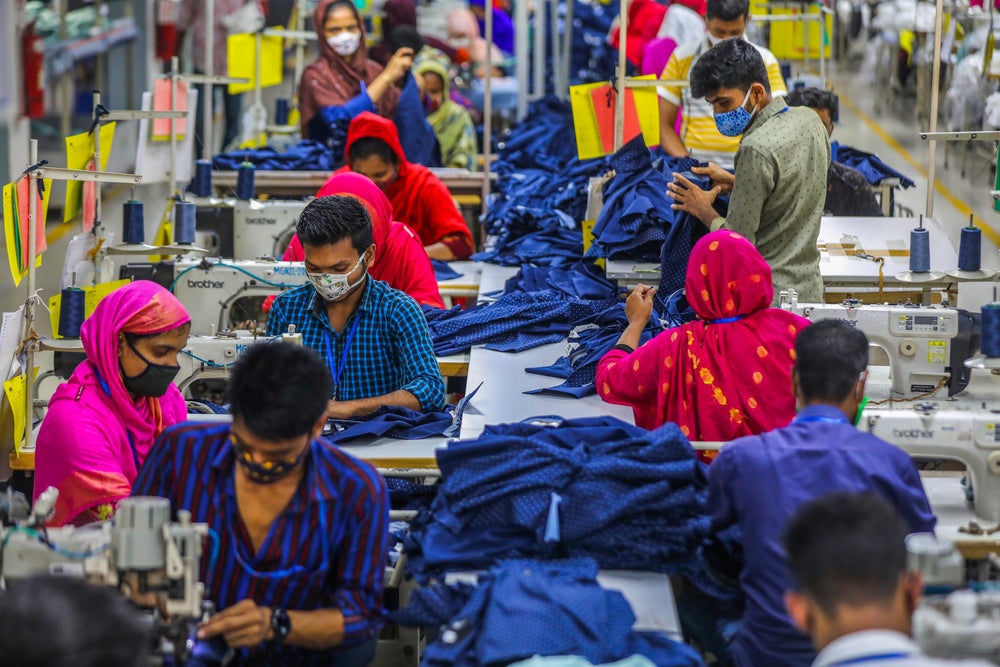
Nearly five years after the world watched a frantic search for survivors turn into an onerous recovery of the dead, the words “Rana Plaza” can still invoke powerful outrage about the precarious conditions that garment workers in the developing world endure every day. But while preventing another Rana Plaza is a vital endeavour, a new book argues it is also important to consider the everyday ways in which garment workers’ health and safety is under attack.
Far more grinding than a major disaster is the violation of workers’ health that occurs on a daily basis, according to Rebecca Prentice and Geert De Neve, editors of ‘Unmaking the Global Sweatshop: Health and Safety of the World’s Garment Workers‘ (University of Pennsylvania Press, 2017).
“Large-scale factory disasters draw a lot of media attention and public outrage, but it is also important to consider the everyday, routine ways in which garment workers’ health and safety is under attack as a normal part of ‘business as usual’,” says Prentice, a senior lecturer at the University of Sussex.
‘Unmaking the Global Sweatshop’ seeks to bring to light the physical and mental health issues born from production pressures and the absence of a living wage
Unmaking the Global Sweatshop rounds up analyses by anthropologists and ethnographers from North America, Europe and Asia who are seeking to bring to light the raft of physical and mental health issues born from production pressures and the absence of a living wage.
Unceasing, repetitious work can manifest itself in the bodies of workers as muscle aches, eye strain, physical exhaustion, and stress, they note. Excessive hours, close quarters, and chronic malnutrition have contributed to waves of mass faintings – and even deaths – in low-cost countries such as Cambodia. They may not always make the headlines but these “recurrent assaults” are unremitting in the tolls they extract.
See Also:
“Even if one day large disasters could be prevented altogether, this would not necessarily remove any of the physical burden and mental strain that garment work imposes on labourers,” Prentice says. “And the latter needs to receive as much attention as the former.”
How well do you really know your competitors?
Access the most comprehensive Company Profiles on the market, powered by GlobalData. Save hours of research. Gain competitive edge.

Thank you!
Your download email will arrive shortly
Not ready to buy yet? Download a free sample
We are confident about the unique quality of our Company Profiles. However, we want you to make the most beneficial decision for your business, so we offer a free sample that you can download by submitting the below form
By GlobalDataFalling short
Despite the widespread adoption of corporate codes of conduct in supplier factories, even those that explicitly cover health and safety frequently fall short of the utopian visions that brands are fond of portraying, Prentice and De Neve say.
“Most codes of conduct represent managerial views of what good ‘health and safety’ should be, and often understand health and safety in narrow, technical terms as being merely about safe infrastructures and fire escapes while ignoring how health needs to be understood in a much more holistic manner,” explains De Neve, a professor of social anthropology and South Asian studies at the University of Sussex.
Besides being poorly enforced, most codes are easily manipulated by companies who are more concerned with their reputations than they are worker wellbeing, De Neve adds.
To truly safeguard the health and safety of garment workers, the industry must grant garment workers the agency to make the decisions that affect them.
“The workers themselves need to participate in defining what a healthy workplace looks like, how it might be achieved, and by what it might be impacted – positively or negatively,” he says.
The hitch is that appalling labour conditions are not a bug but a feature. Far from being an “unintended side effect”, worker exploitation is a “structural feature of the global garment regime,” Prentice says.
“Garment supply chains built upon poor labour conditions can be very profitable, and any solution to these problems has to acknowledge that fact, rather than pretending that the persistence of poor labour conditions is a mystery.”
Employers require healthy bodies, yet they’re loath to give workers time off because of potential disruptions to production
This is the “central paradox” at the heart of the factory floor, according to Prentice and Geert. Employers require healthy bodies, yet they’re loath to give workers time off because of potential disruptions to production.
And the so-called “fast fashion” chains that litter the high street are the worst offenders.
“Not only are there environmental impacts of cheaply-made and ‘disposable’ fast fashion clothes, but the tight deadlines and slim margins that producers have to work under tend to be offloaded onto workers who suffer from unhealthy work conditions and low wages,” Prentice says.
“Unmaking” these conditions
Still, it’s possible – and “indeed vital”, according to Prentice – to “unmake” these conditions so that workers can lead healthy and fulfilling lives, though this requires the industry to acknowledge the unequal power dynamics that pervade every level of the supply chain.
“It also means looking beyond the physical infrastructure at the everyday work rhythms, the disciplinary regimes and the low wages that reproduce the ill health and poor wellbeing of garment workers over time.”
Garment workers need to be able to successfully advocate for themselves, not only to improve wages but also bolster labour standards.
“Paying better wages, providing safer working conditions and environments, and caring for the environment can all contribute to making global value chains more sustainable and to spreading the profits more equitably,” she adds.







